Bayonne, located in the South West of France, is particularly known for its ham and its chocolates (and its rugby club). Apart from that, the city is a medieval city that has been reasonably well conserved over the centuries. The inner part of the city centre is old but well maintained.
Bayonne is divided by the Adour river (and the smaller Nive river), though most of the interesting parts of the city (of some 55,000 inhabitants) are located in the South part.
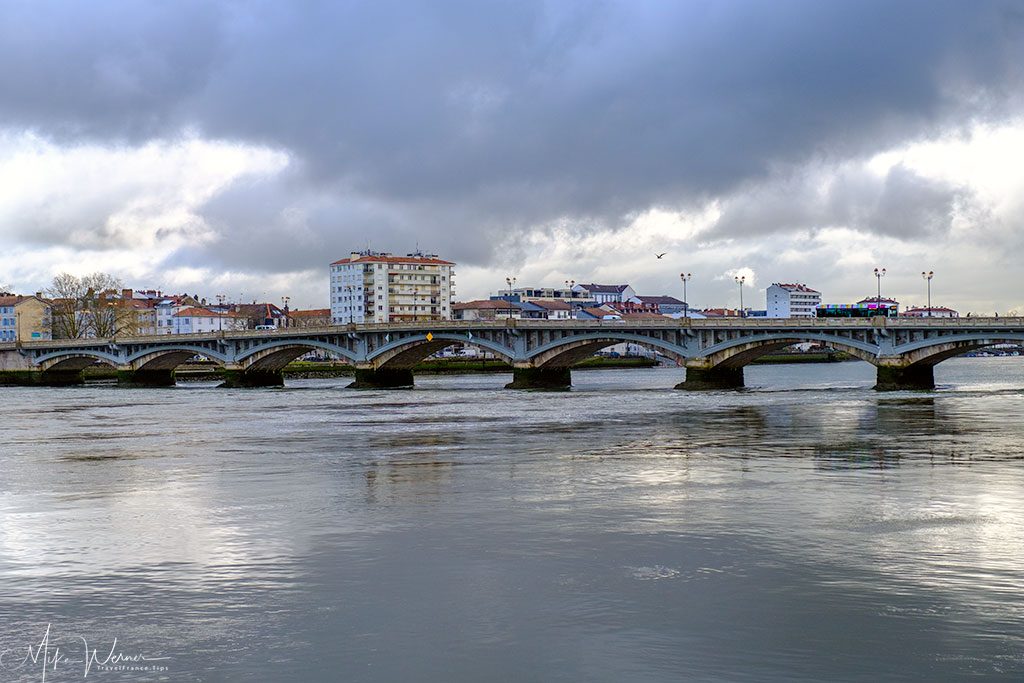
After a tug of war between France and England (also known as the 100 year war), France finally regained control of the city in the year 1451. But it was on a downwards economic spiral until a large Jewish community landed here, escaping from the Spanish Inquisitions. They brought with them the knowledge of making chocolates, which has since then become one of its main products.
 Famous Bayonne chocolates
Famous Bayonne chocolates Famous Bayonne chocolates
Famous Bayonne chocolatesWalking the streets in the old part of the city, you will find streets to be narrow, often with cobblestones and only a few parks (which is normal, since it’s a medieval city that has well conserved its heritage).
 Narrow streets of Bayonne centre
Narrow streets of Bayonne centre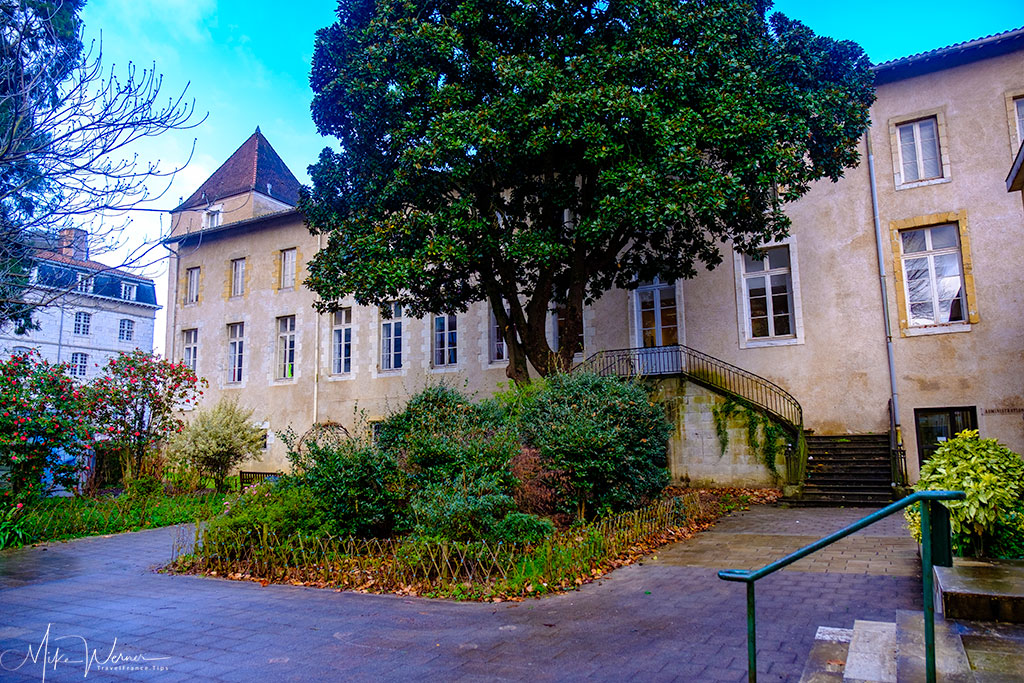 One of a very few park (Square Dubarat) in Bayonne
One of a very few park (Square Dubarat) in BayonneThe buildings you will see during a stroll down the old streets of Bayonne are “old”. Although Bayonne was occupied during the 2nd World War, not much damage was inflicted. The Allies had tried a landing here, but failed and withdrew. So the buildings are still very much intact.
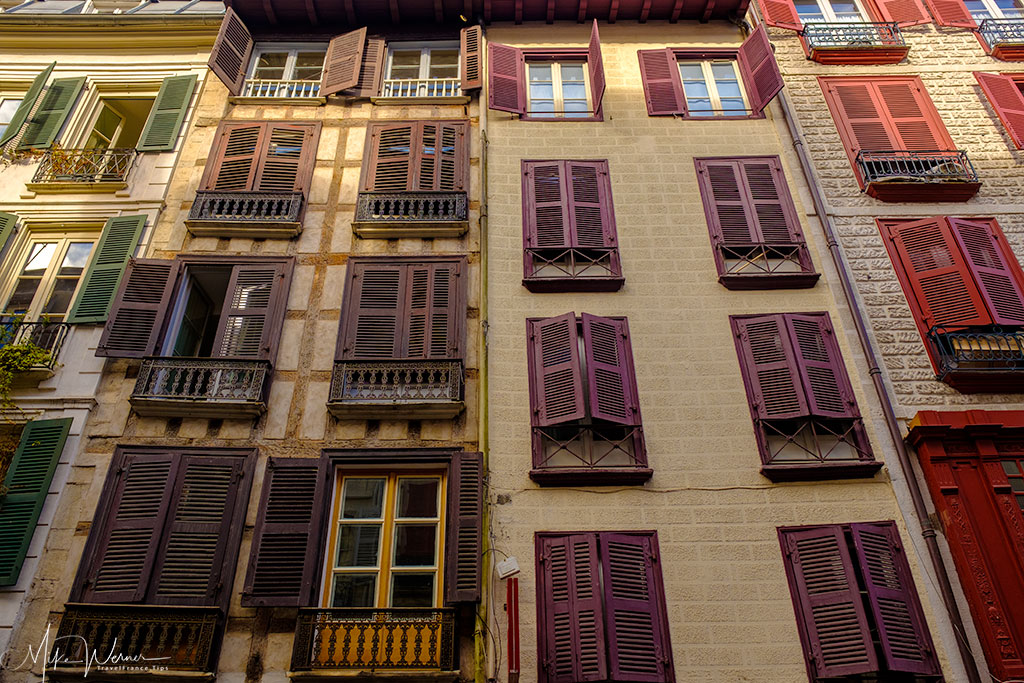 Old building in Bayonne
Old building in Bayonne Old building in Bayonne
Old building in Bayonne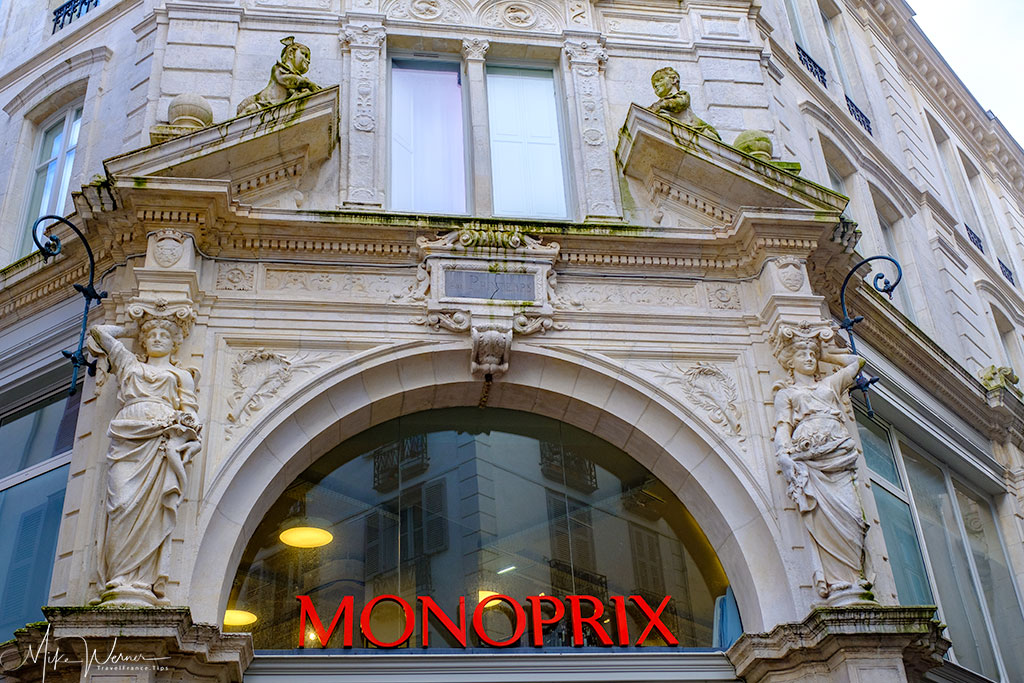 Local supermarket housed in an old building in Bayonne
Local supermarket housed in an old building in Bayonne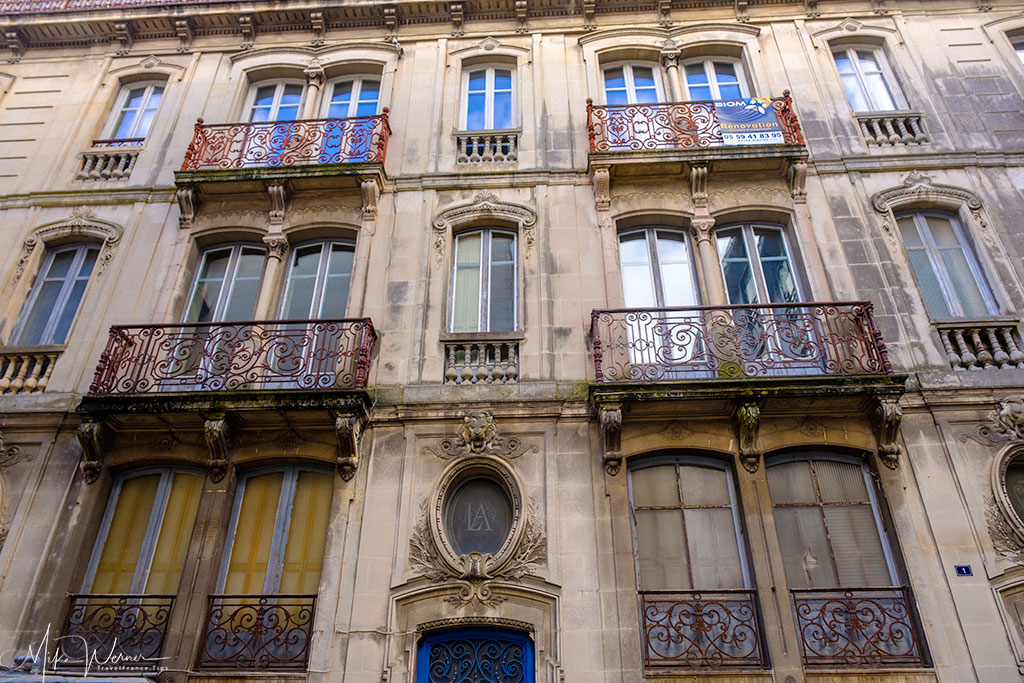 Old building in Bayonne
Old building in BayonneThe three things you will see for sure when walking the old city are: the fortified/ramparts walls, the old castle and the cathedral;
Fortified Walls
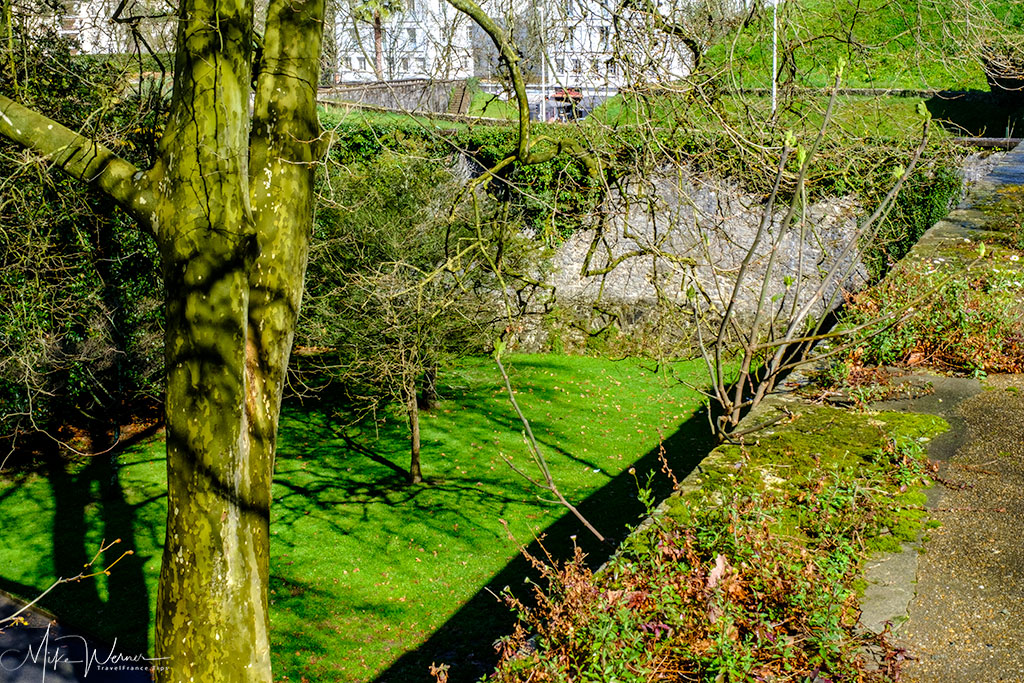 Fortified walls of Bayonne
Fortified walls of Bayonne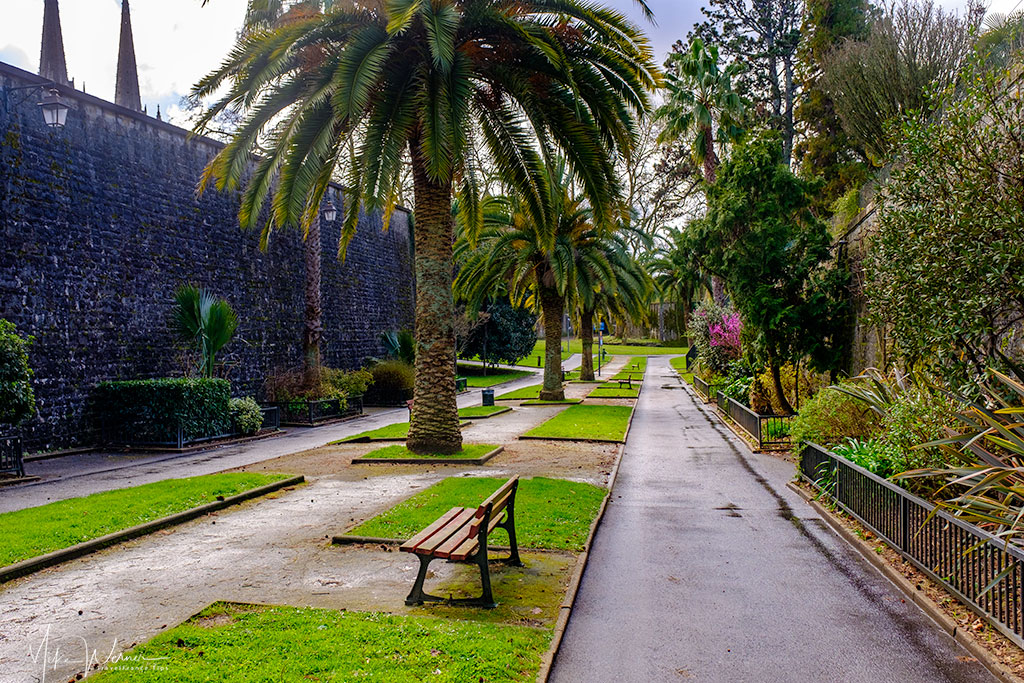 Fortified walls and its parks of Bayonne
Fortified walls and its parks of BayonneThe fortified walls surround most of the city centre. Along these walls are parks, benches and foot paths, making a stroll along the walls a pleasant stroll. The free electric shuttle bus also uses these paths.
At the larger park next to the botanical gardens and close to the actual fortress, you will find this imposing memorial:
 Wars monument alongside the fortified walls of Bayonne
Wars monument alongside the fortified walls of BayonneThe Castle/Fortress
The fortress/castle is imposing and very visible within the city centre:
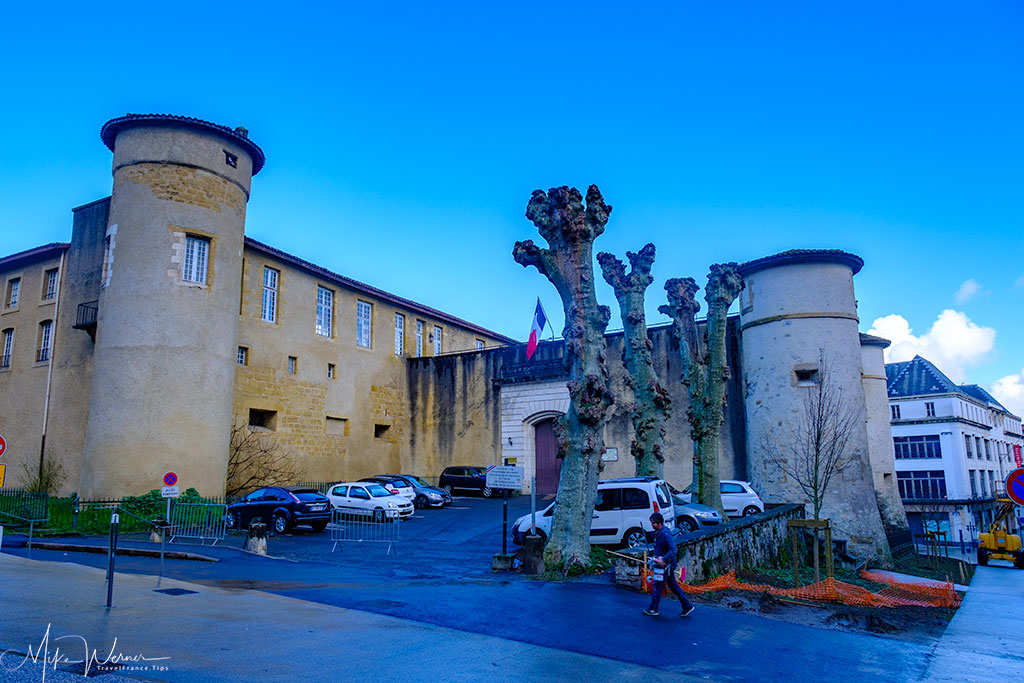 Bayonne Castle (le Chateaux Vieux)
Bayonne Castle (le Chateaux Vieux)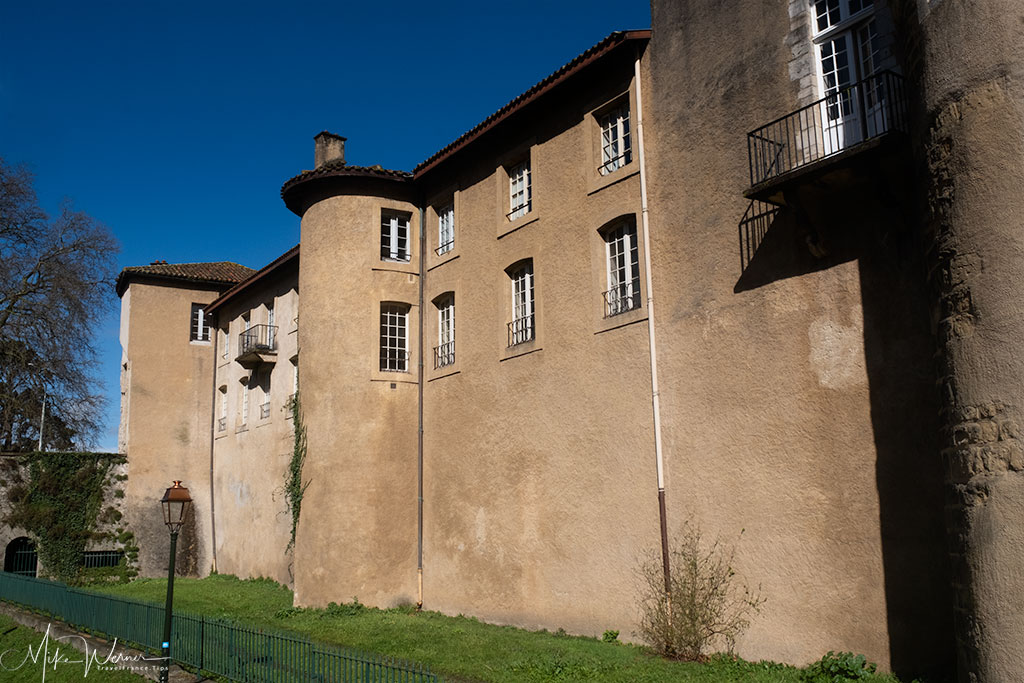 Bayonne Castle (le Chateaux Vieux)
Bayonne Castle (le Chateaux Vieux) Bayonne Castle (le Chateaux Vieux)
Bayonne Castle (le Chateaux Vieux)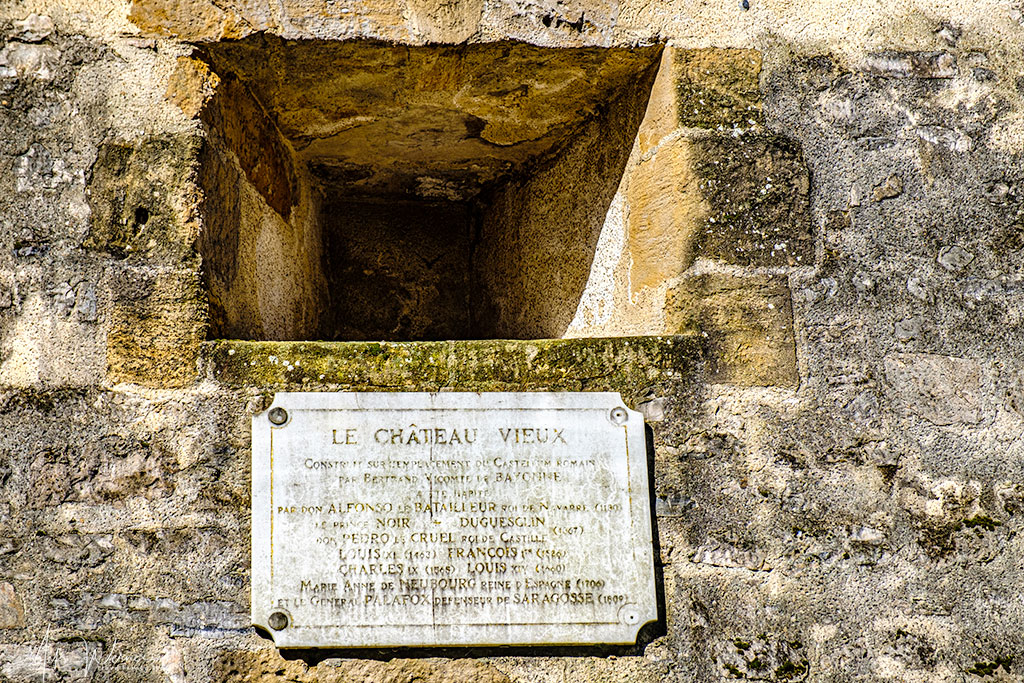 Bayonne Castle (le Chateaux Vieux)
Bayonne Castle (le Chateaux Vieux)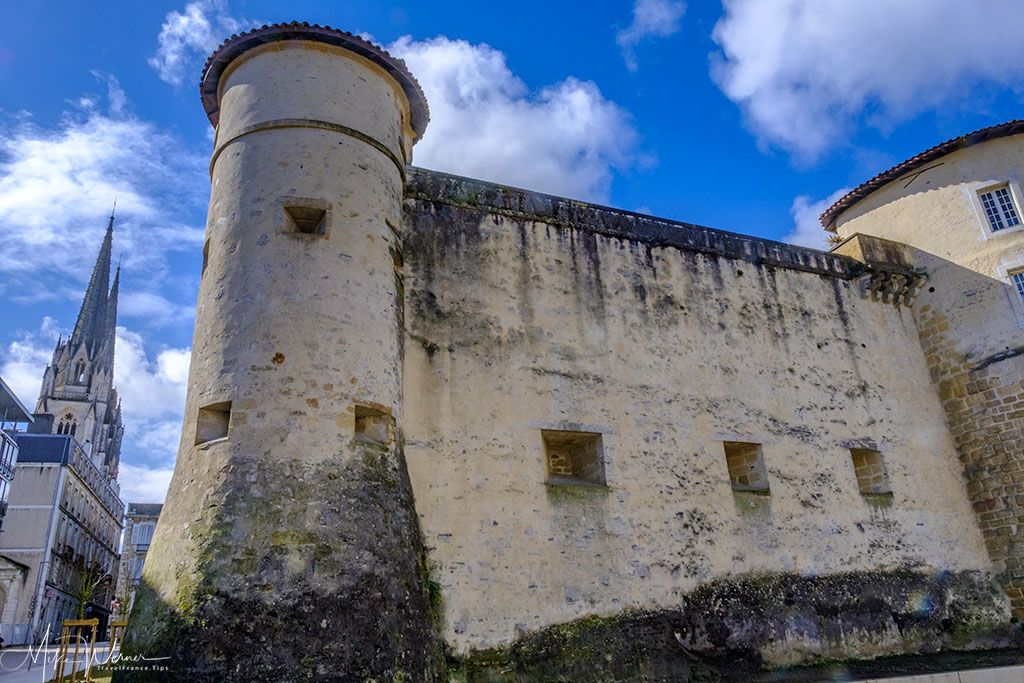 Bayonne Castle (le Chateaux Vieux)
Bayonne Castle (le Chateaux Vieux)The castle’s construction started in the 12th century, and has housed, apart from the governors, the English Black Prince (Edward of Woodstock). The castle is called “Chateau Vieux” meaning “Castle Old“. And yes, there is a “Chateau Neuf” (“Castle New“) which houses an exhibition centre and can be found on the other side of the Nive river.
Today it’s still a military installation and can NOT be visited. It’s not the only military units that are housed in old buildings: across the Adourn river is the “La Citadelle” built in 1680 by Vauban (responsible for many of France’s old defense towers and fortresses).
 La Citadelle fortress in Bayonne
La Citadelle fortress in BayonneCathedral
The gothic architecture Cathedral of Bayonne, known as the Cathedral of Saint Mary of Bayonne or also as the Cathedral of Our Lady of Bayonne (in French: Cathedrale Sainte-Marie de Bayonne or Cathedrale Notre-Dame de Bayonne) was built in the 13th century on the remains of the original cathedral that was destroyed by fire in 1258 and 1310.
This city/town forms part of one of the French legs of the Santiago de Compostela pilgrimage route.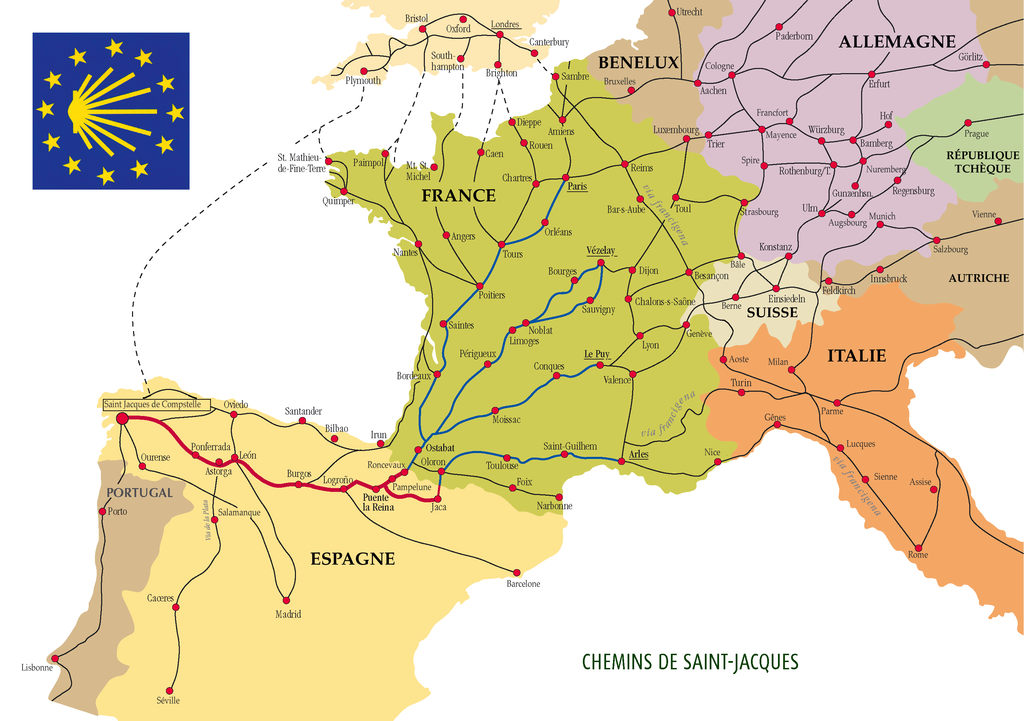
Santiago de Compostela pilgrimage routes
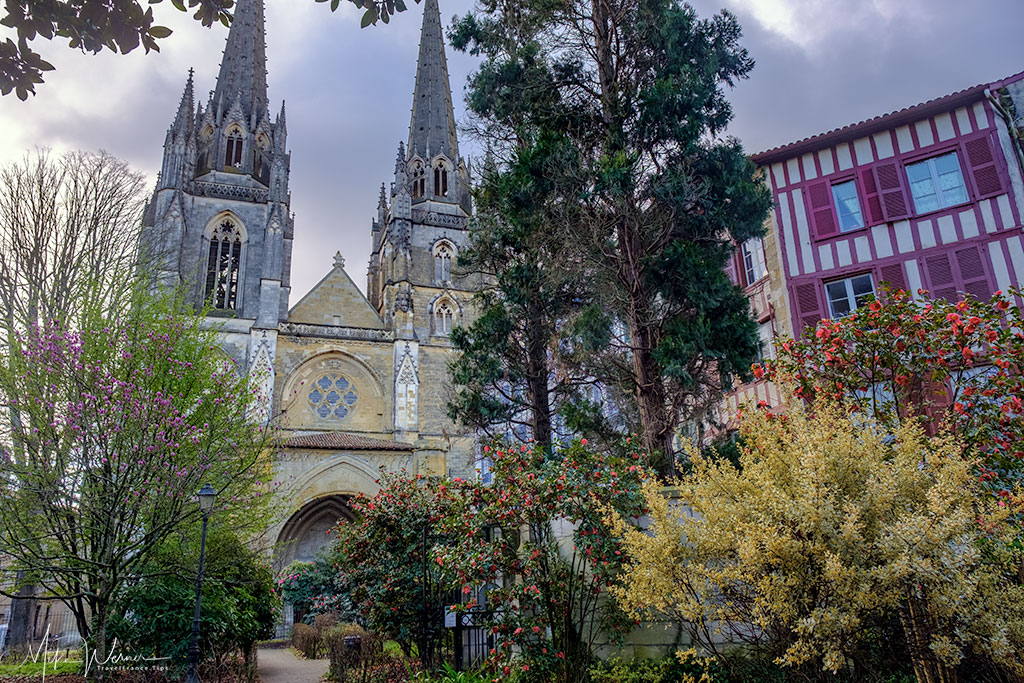 The Cathedral of Bayonne
The Cathedral of Bayonne The Cathedral of Bayonne
The Cathedral of Bayonne The altar of the Cathedral of Bayonne
The altar of the Cathedral of Bayonne Inside the Cathedral of Bayonne
Inside the Cathedral of BayonneJust outside the cathedral you’ll find this cute square with a fountain.

Culture
The culture of Bayonne is Basque. The whole area which includes Biarritz is Basque. And Basque is of Spanish origins and when you say Spanish you get by default bullfighting. So as you would expect, there’s a rather big bullfighting arena in Bayonne.
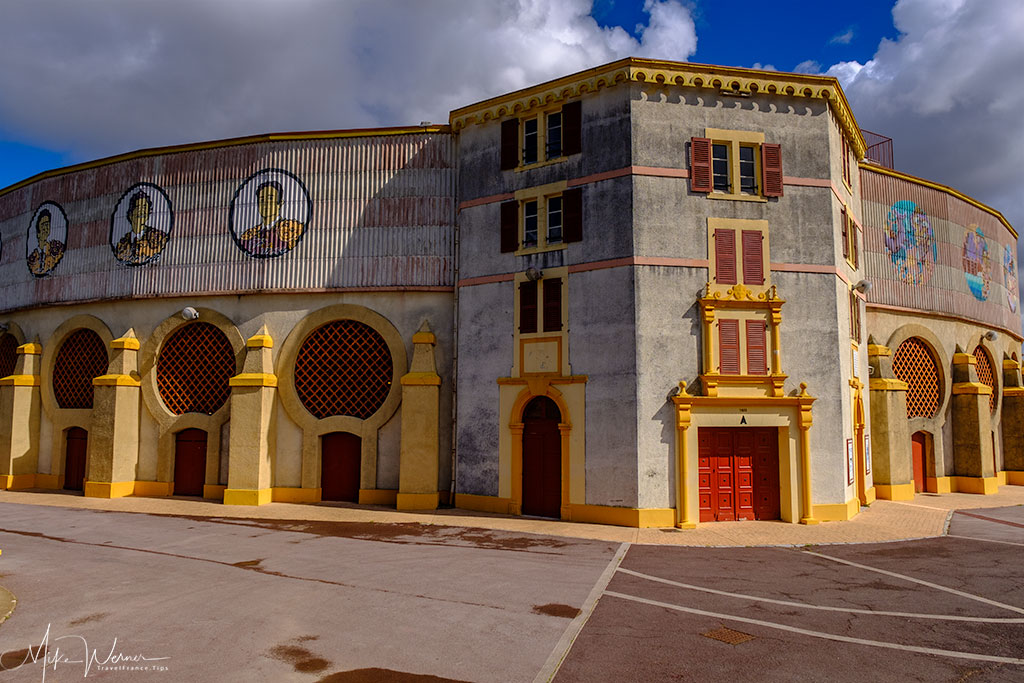 Bullfighting Arena in Bayonne
Bullfighting Arena in Bayonne Bullfighting Arena in Bayonne
Bullfighting Arena in Bayonne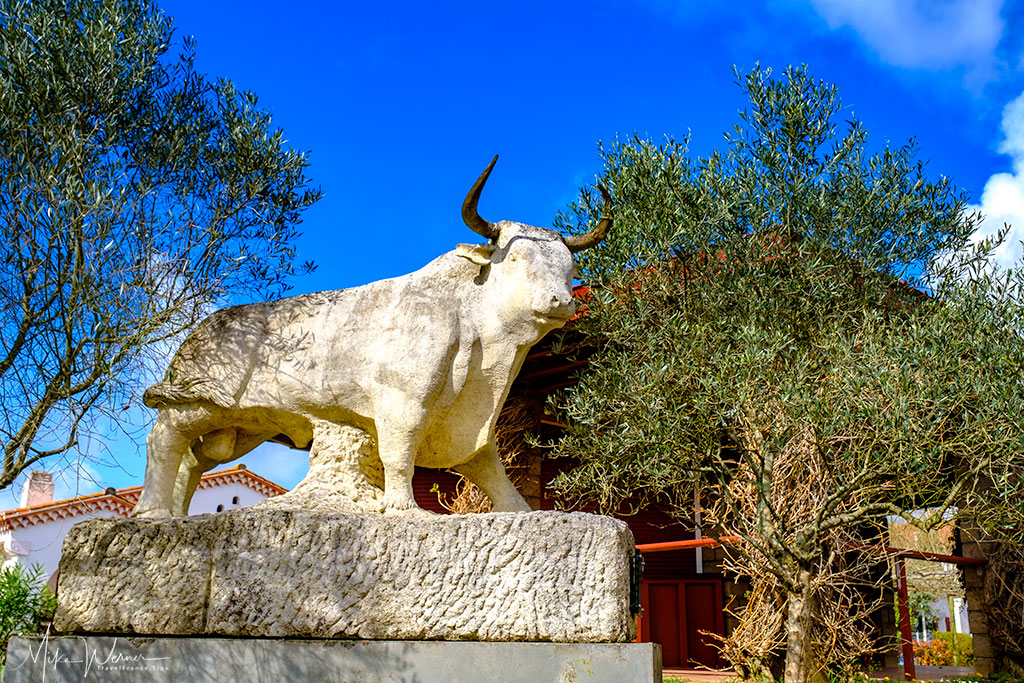 Bullfighting Arena in Bayonne
Bullfighting Arena in BayonneBayonne has the oldest French bullfighting tradition. It dates back to the year 1283. The current Arena was opened in 1893 and is the largest in the South/West of France, seating 10,000 spectators.
Bayonne also has a releasing of the bulls into the streets of Bayonne. This occurs during the Summer Festivities (Fetes de Bayonne) in August.
Apart from bullfighting, Bayonne, being part of the Basque region, also sees the Basque Pelota game and Rugby as popular sports.
Summary
Bayonne is an interesting city to visit. There’s a lot of tradition, and the city has maintained its medieval look and feel (at least the inner city centre has).
It’s not a big a city, so it’s easy to get around. It’s not a city you’ll stay for a week, a day or two will be sufficient.
